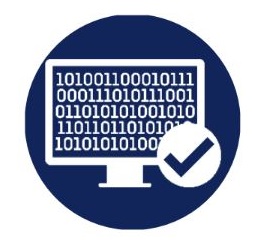What Are They?
The Help America Vote act (HAVA) of 2002 requires that each state, acting through the chief state election official, shall implement, in a uniform and nondiscriminatory manner, a single, uniform, official, centralized, interactive computerized statewide voter registration list defined, maintained, and administered at the state level containing the name and registration information of every legally registered voter in the state. Voter registration is a prerequisite for voting in federal elections in all states and territories, except North Dakota, which has no voter registration requirements.
Voter registration systems can be defined as a combination of either hardware, software, or firmware, materials, and documentation used to automate the process of voter registration and secure voter information within a county, state, or election jurisdiction by election administrators. Voter registration systems hold the capability of administrative functions that allow them to pair with election poll books (EPBs) to aid in the voting process on election day as well. Voter registration systems should be connected to a private network connection, administered through local jurisdictions and their information technology department. Voter registration systems are designed by either private sector manufacturers or in-house jurisdictions and managed by them based on high-level standards of cybersecurity and data infrastructure maintenance.
Why Pilot These Systems?
The United States Congress passed the Help America Vote Act of 2002 (HAVA) [HAVA02] to modernize the administration of federal elections and to establish the U.S. Election Assistance Commission (EAC) to provide guidance to the states in their efforts to comply with the HAVA administrative requirements. Under the authority of HAVA, the EAC developed the Election Supporting Technology Evaluation Program (ESTEP) in 2022, responsible for the evaluation of technologies not covered under the Voluntary Voting System Guidelines (VVSG). ESTEP is tasked with designing testable requirements and materials for standardizing the security, accessibility, and usability of voter registration portals and databases in the United States.
The Help America Vote Act (HAVA) did not specify detailed security requirements for voter registration lists, resulting in a broad spectrum of security controls and technologies. Although registration standards vary widely from state to state, each state keeps personally identifiable information connected to a voter's name in order to determine eligibility and precinct information. Ensuring the security of this data is critical to maintaining the integrity of elections and public confidence in the electoral process.
The majority of states' election infrastructures depend on and are intimately integrated with their voter registration systems. The registration database drives the preparation of pollbooks, ballot preparation, petitions, signature verification for absentee ballots, and assists election officials in conducting an election. While technological improvements make it easier for election authorities to keep records up to date, it also presents continuous data-security challenges. Cyberattacks and breaches targeting these systems can potentially compromise the integrity of the electoral process, making it important for states to continually improve their security measures. Safeguarding voter registration data is a multifaceted effort that involves both technical and procedural measures.
Questions? Please Contact:
Election Supporting Technology Evaluation Program
[email protected]


